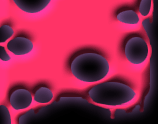|


Cheese: Vexation, frustration, but final success.
Check out Raymond Buckland's Gypsy Dream Dictionary
A handy little book of symbols to look up after you have a dream.
Dreams are had every night by all. Some are remembered while others aren't. They can be a well of creativity. A dream may turn into more like a book, a TV Show etc. Some are plain silly while others terrify. They can reveal things and help solve problems. Dreams aren't just mindless entertainment during the sleeping hours. Images are conjured on our mental screens with sights and sounds and feelings. Sometimes you get a vision of what's to come or a message of some sort. They shouldn't just be cast away with the wiping away of sleep. Trying to remember dreams is a good thing to do. Leave a pad of paper and a pen near your bed to write down all your dreams since they can reveal things. Each person usually has several dreams that last anywhere from 10 to 45 minutes. The most vivid dreams happen during REM sleep. This is a time when the brain is really active and the eyes dart back and forth quickly beneath the eyelids, and the body's large muscles are relaxed. In REM a person will usually have a new one every 90 minutes. The most vivid dreams happen as sleep progresses especially right before a person wakes. Unpleasant emotions are more common in dreams than pleasant ones. Most dreams are in color even if you aren't aware of it. Dreaming of being killed doesn't mean you will die in your sleep. People have been trying to figure out the meanings of dreams for centuries. The earliest dream records go back five thousand years.


Dreams
Mental activity associated with the rapid-eye-movement (REM) period of sleep. It is commmonly made up of a number of visual images, scenes or thoughts expressed in terms of seeing rather than in those of the other sense or in words. Electroencephalograph studies, measuring the electrical activity of the brain during REM Sleep, have shown that young adults dream for 11 1/2 to 2 hours of every 8-hour period of sleep. Infants spend an average of 50% of their sleep in the REM phase (they are believed to dream more often than adults) a figure which decreases steadily with age. During dreams blood pressure and heart rate increase, and breathing is quickened, but the body is otherwise immobile. Studies have shown that sleepers deprived of dream-sleep are likely to become irritable and lose coordination skills. Unusually frightening dreams are called nightmares, and daydreams are constructed fantasies that occure whil the individual is awake. Studies have demonstrated the existence of lucid dreaming, where the individual is aware that he is dreaming and has a degree of controll over his dream.
Sigmund Freud in his pioneering work The Interpretation of Dreams (1900, tr. 1913), was one of the first to emphasize dreams as keys to the unconscious. He distinguished the manifest content of dreams the dream as it is recalled by the individual from the latent content or the meaning of the dream, which Freud saw in terms of wish fulfillment. C.G. Jung held that dreams function to reveal the unconscious mind, anticipate future events, and give expression to neglected areas of the dreamer's personality. Another theory, which PET scan studies appear to support, suggests that dreams are a result of electrical energy that stimulates memories located in various regions of the brain.
Source: Columbia Encyclopedia
|

